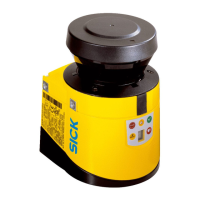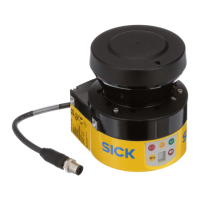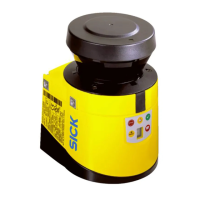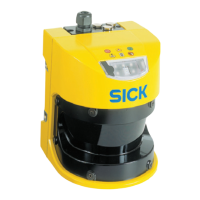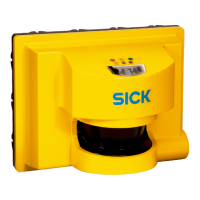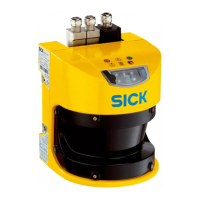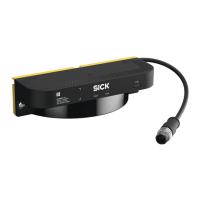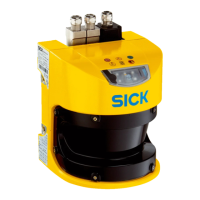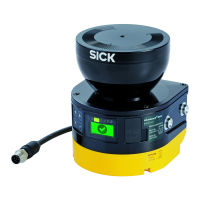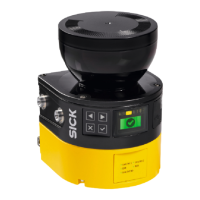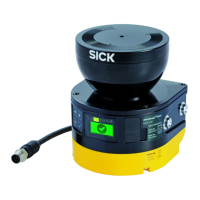How to reset SICK S3000?
- LLaura RushJul 26, 2025
If the SICK Scanner requires a reset, operate the control switch for restart or reset.
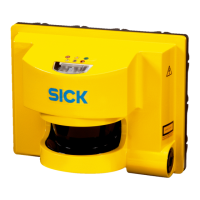
How to reset SICK S3000?
If the SICK Scanner requires a reset, operate the control switch for restart or reset.
What to do if my SICK S3000 shows a system error?
If the SICK Scanner indicates a system error, note the error code on the 7-segment display or use the CDS diagnostics tool. Then, power off the S3000 for at least 2 seconds before turning it back on.
What to do if there is a fault in the external device monitoring (EDM) of my SICK S3000 Scanner?
If the SICK Scanner displays a fault in the external device monitoring (EDM), verify that the contactors are functioning correctly and properly wired. If '?' is displayed, switch off the device, wait at least 3 seconds, and then switch the voltage supply back on.
Why does my SICK Scanner show a temperature error?
If the SICK Scanner gives a temperature error, check whether the device is being operated within the permissible ambient conditions.
What to do if my SICK S3000 Scanner is dazzled?
If the SICK Scanner is dazzled, check for external light sources such as headlights, infrared lights, stroboscopic lights, or the sun. If necessary, remount the device.
What to do if my SICK S3000 Scanner shows an input signal for a non-defined monitoring case?
To resolve an undefined monitoring case in your SICK Scanner, check the vehicle's path, the operating process of the monitored machine or system, and, if necessary, the configuration of the monitoring cases using the CDS.
| Protection Class | IP65 |
|---|---|
| Type | Safety laser scanner |
| Resolution | 30 mm |
| Number of Simultaneously Monitored Fields | 2 |
| Ambient Operating Temperature | 0 °C ... +50 °C |
| Supply Voltage | 24 V DC |
Defines the purpose of the operating instructions for the S3000 safety laser scanner.
Defines the requirements for qualified safety personnel for S3000 installation and operation.
Specifies the correct usage guidelines for the S3000 safety laser scanner.
Provides essential safety information and protective measures for operating the S3000.
Highlights the key features and capabilities of the S3000 safety laser scanner.
Explains the operational principles and conditions for the S3000 safety laser scanner.
Details how to activate and use the compatibility mode for S3000 scanners.
Explains how to configure the S3000 for specific applications (mobile/stationary).
Describes dual, dual protective fields, and triple field modes for S3000 configuration.
Explains the configuration and use of Output Signal Switching Devices (OSSDs).
Covers restart behavior configuration: without interlock, with delay, or with interlock.
Describes how to configure protective and warning fields, including number of field sets per variant.
Explains how to configure and switch between multiple monitoring cases.
Determining the protective field size and minimum distance for safe operation.
Specifies the minimum distance calculation for hazardous point protection.
Explains how to calculate the protective field length for mobile applications.
Explains the timing considerations for switching between monitoring cases.
Outlines the steps and special features to note during the mounting process.
Details how to connect the S3000 using the system plug and wiring requirements.
Provides various connection diagrams for S3000 safety functions.
Illustrates connection diagrams for protective field switching with a Flexi Soft controller.
Details the prerequisites and tools needed for configuring the S3000 safety laser scanner.
Outlines the process for initial commissioning and the need for qualified safety personnel.
Describes pre-commissioning tests to confirm safety requirements and proper installation.
Details the daily testing procedure for the protective device by authorized personnel.
Provides guidance on actions to take in case of malfunctions or errors with the S3000.
Describes the meaning of LED indications and how to rectify associated errors.
Explains the meaning of 7-segment display indications and error rectifications.
Explains how to calculate total application response time including OSSD and multiple sampling.
Presents comprehensive technical data for the S3000, including general and electrical specifications.
